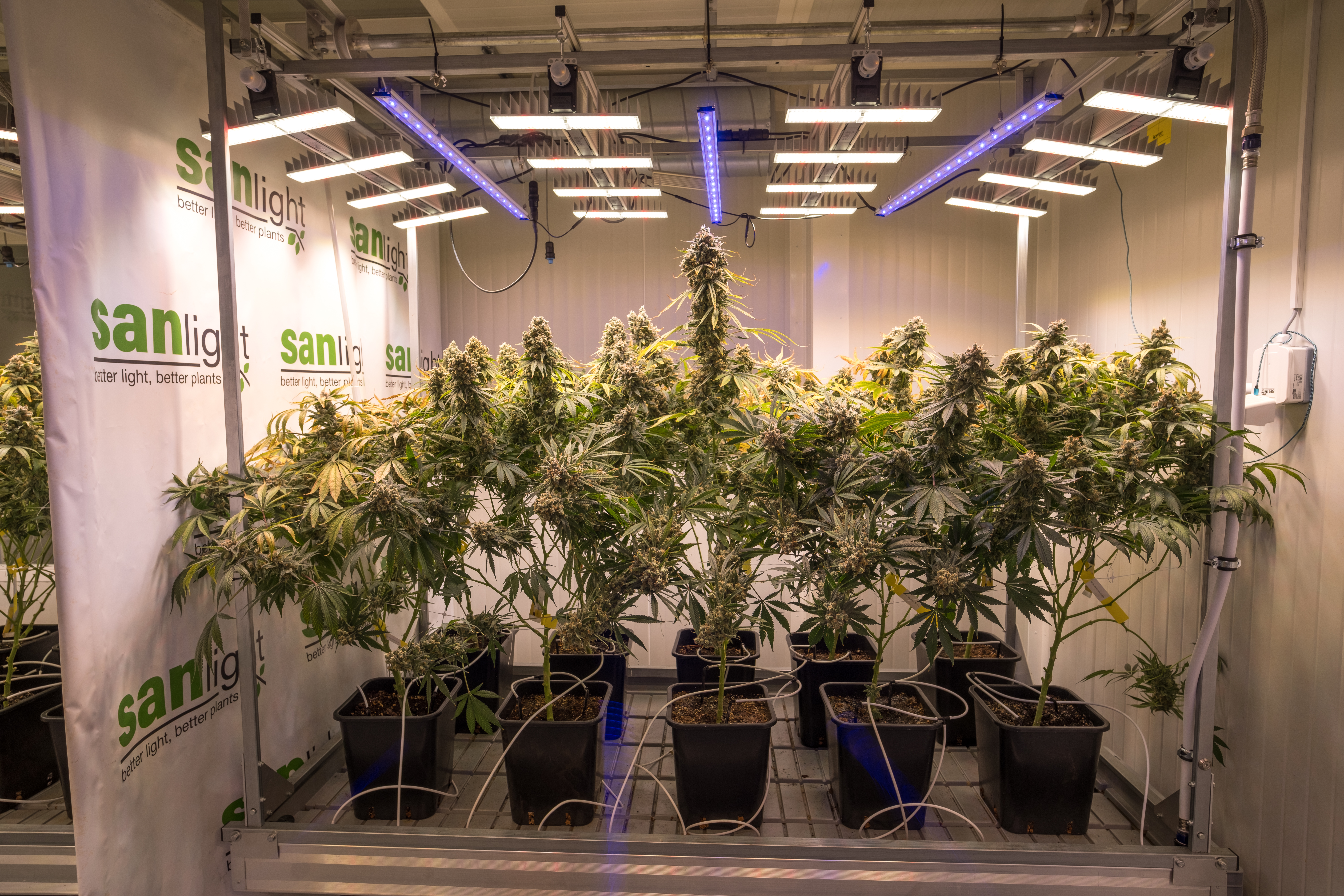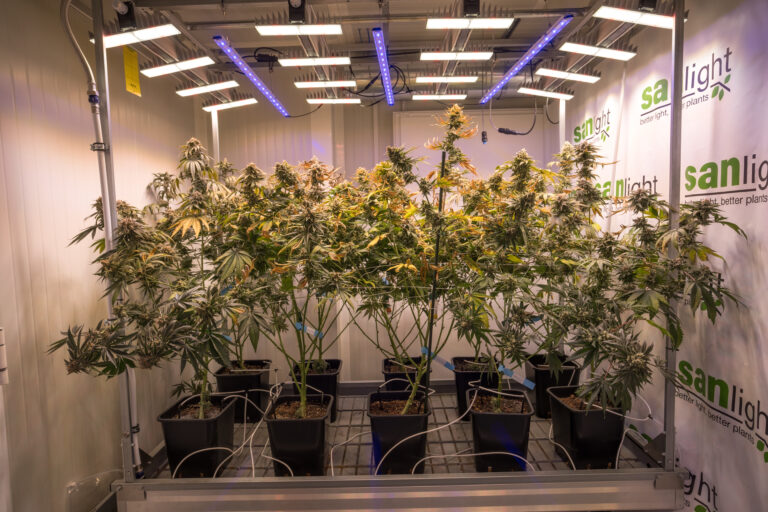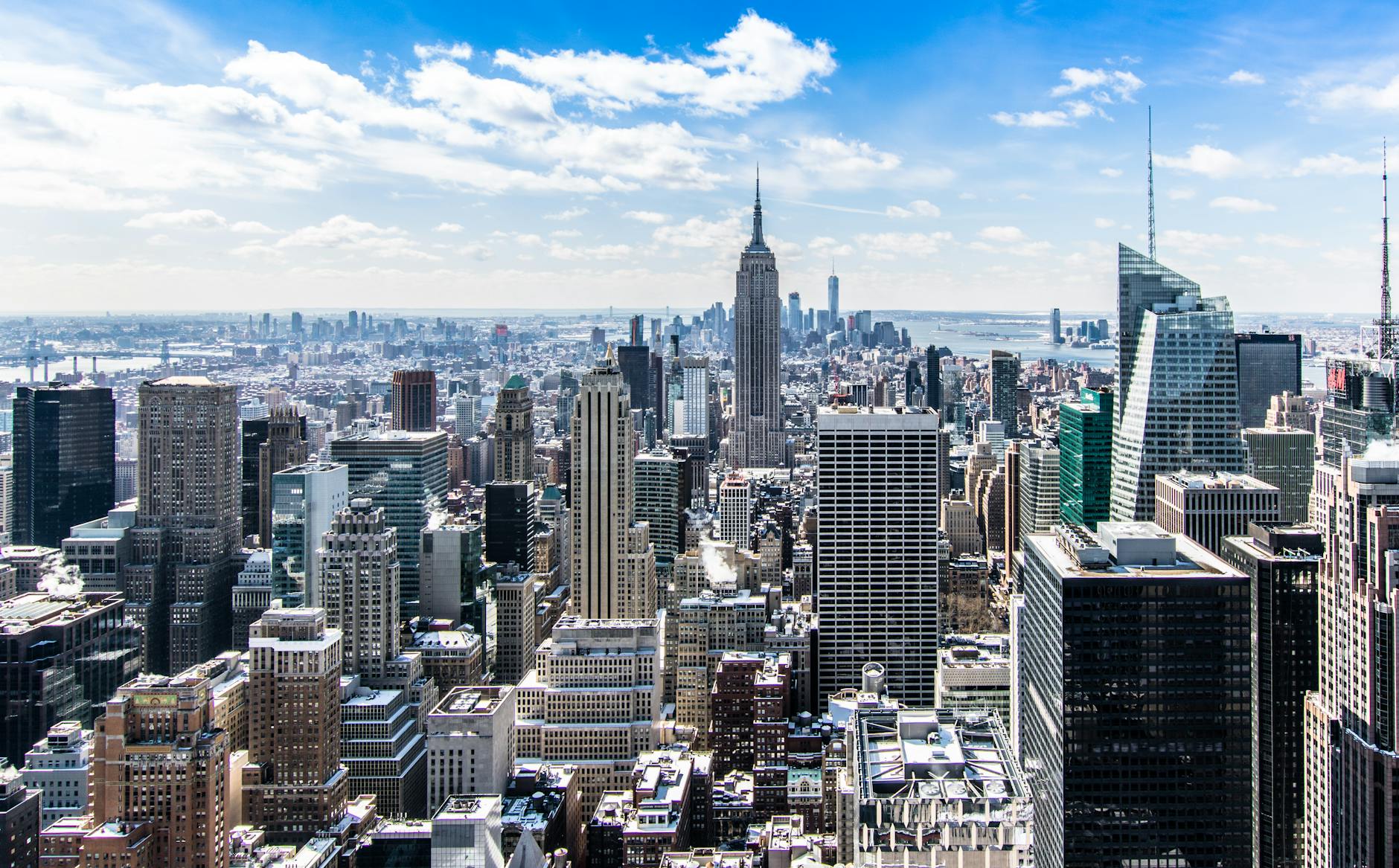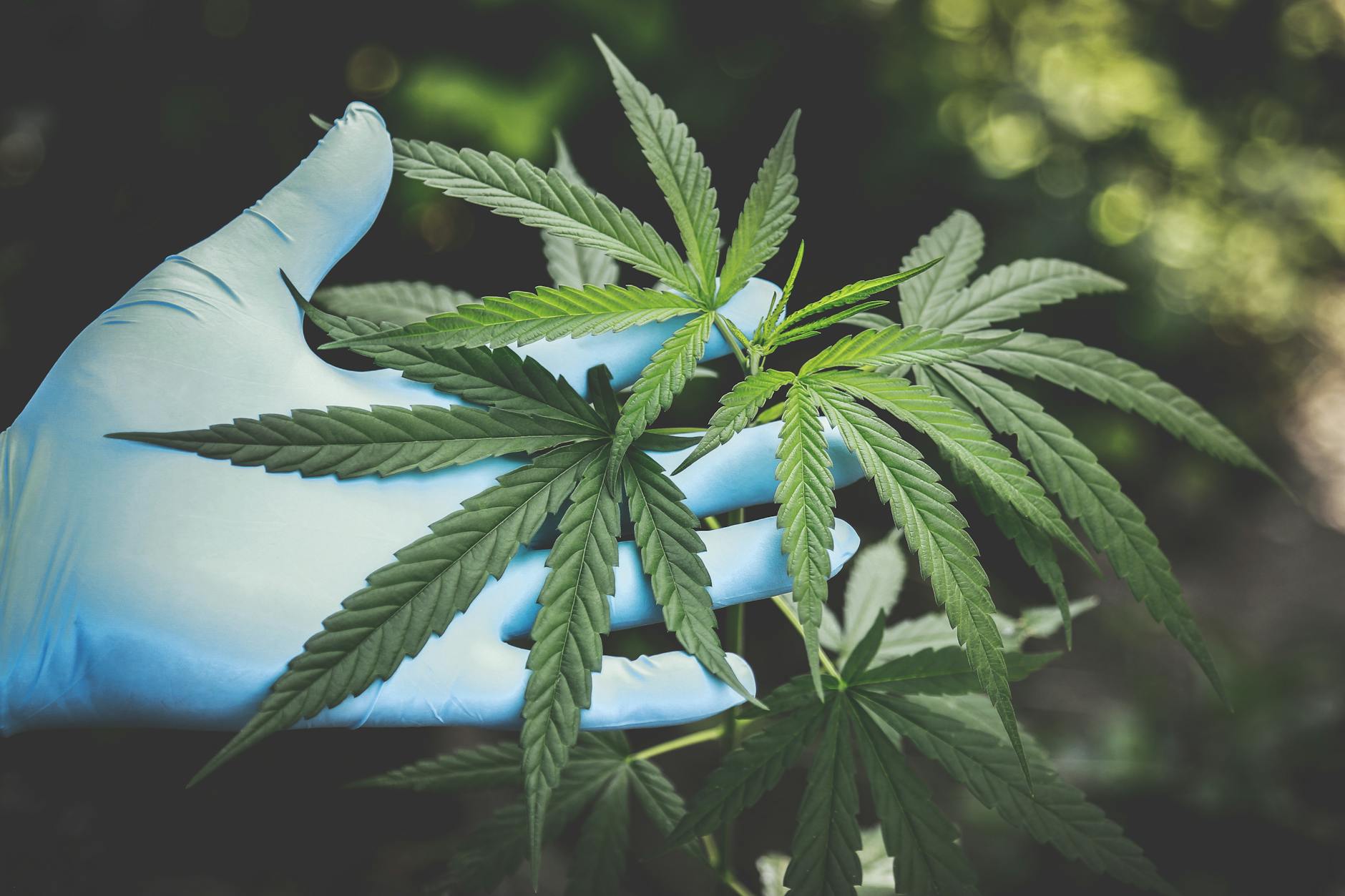
Influence of UV Light on Cannabis – Interim Study
Executive Summary SANlight has conducted an interim trial to investigate whether supplemental UV lighting can enhance the yield and quality of cannabis. The study focused

SANlight has conducted an interim trial to investigate whether supplemental UV lighting can enhance the yield and quality of cannabis. The study focused on two specific UV-A ranges, 365 nm and 420 nm, applied in addition to the company’s standard EVO-series spectrum. Early results show that supplemental UV did not increase yield and, in fact, reduced energy efficiency. The control group, which received no UV supplementation, achieved the highest grams-per-watt performance. Effects on cannabinoids and terpenes were inconsistent: 420 nm UV raised THC content in one genotype but lowered it in another, while 365 nm UV led to a measurable reduction in terpene concentration. Because the UV groups also received slightly more total photons than the control group, attribution of results solely to wavelength effects is not possible. Overall, these interim findings do not support the use of UV supplementation at 365 nm or 420 nm for cannabis cultivation.

Growers and researchers often propose that ultraviolet radiation can increase concentrations of cannabinoids and terpenes in cannabis by triggering stress-related metabolic pathways. In particular, 365 nm falls into the UV-A band, which is known to activate plant defense mechanisms, while 420 nm lies at the violet edge of the visible spectrum, overlapping with photoreceptors that regulate morphology and metabolism. While these theories are attractive, published data are inconsistent and often contradictory. The present trial was designed to test these wavelengths under realistic indoor cultivation conditions using LED-based fixtures.
The trial compared three lighting conditions: a control treatment with SANlight EVO fixtures alone, a treatment with supplemental 365 nm UV, and a treatment with supplemental 420 nm UV. Two genotypes were tested, Serious Happiness and London Mint Cake, with thirty vigorous plants per treatment group. Environmental parameters such as irrigation, nutrient supply, and climate were kept constant across all groups.
Measurements focused on three areas: dry flower yield, energy efficiency expressed as grams per watt, and chemical composition determined through cannabinoid and terpene analysis.
The control group produced the best results in terms of energy efficiency. Neither UV treatment increased flower weight, and when the additional power consumption of the UV channels was included, the grams-per-watt ratio decreased.
The effect of UV on THC levels was genotype-dependent. Supplemental 420 nm increased THC content in Serious Happiness but lowered it in London Mint Cake. In contrast, 365 nm supplementation produced no consistent improvement in cannabinoid levels.
Plants grown under 365 nm UV showed a reduction in total terpene concentration of approximately five to six percent compared to the control. Results under 420 nm UV were mixed, with no clear pattern of improvement.
At present, supplemental UV light in the tested ranges does not provide a measurable advantage in cannabis production. The decrease in terpene levels under 365 nm UV suggests that this wavelength may suppress certain biosynthetic pathways rather than enhance them. The opposite THC responses observed under 420 nm UV highlight the strong influence of genotype on UV sensitivity.
A major limitation of this interim study is the fact that the UV treatment groups received approximately nine percent more total light than the control group. This confound makes it difficult to assign the observed differences solely to spectral effects. Without normalization for photon flux, conclusions remain tentative.
The dataset is limited in size and scope. Only two genotypes were tested, replication was limited, and light intensity was not perfectly standardized across treatments. The trial also did not include UV-B wavelengths, which some studies suggest may have stronger effects on cannabinoid production.
Based on these interim findings, growers should not expect reliable improvements in yield, THC content, or terpene levels from adding 365 nm or 420 nm UV light to their cultivation environment. In most cases, the additional power required for UV supplementation decreases overall efficiency. Because responses vary significantly by genotype, results from one strain cannot be assumed to apply to others. For growers who wish to experiment with UV supplementation, it is advisable to run a parallel control group to verify results before scaling up.
Future trials will address the current limitations by using cloned plants to reduce genetic variability, equalizing photon flux across all treatments, and expanding the range of tested cultivars. Additional studies may also include UV-B wavelengths once suitable LED sources are available. Data from these follow-up experiments will help determine whether specific genotypes can benefit from carefully controlled UV supplementation.
This interim study indicates that supplemental UV light at 365 nm and 420 nm does not provide a practical benefit for cannabis cultivation. The control treatment without UV achieved the highest efficiency, while cannabinoid and terpene responses to UV were inconsistent and strongly dependent on genotype. These findings are not final; further replicated experiments are planned. Until then, UV supplementation at the tested wavelengths cannot be recommended as a reliable strategy for increasing yield or quality.

Executive Summary SANlight has conducted an interim trial to investigate whether supplemental UV lighting can enhance the yield and quality of cannabis. The study focused

We came, we saw, we lit it up – MJBizCon 2024 was an absolute blast, and we couldn’t be prouder to have been there as

In a radiant whirlwind of vibrant energy and strategic partnerships, we, SANlight, the pioneering creators of LED grow lights, embarked on an electrifying journey to

Regarding efficiency in an indoor grow environment, the power consumption of the HVAC system and the Grow Lights are the biggest energy consumption factors. In

© Copyright [year] SANlight Americas LLC | Terms and Conditions | Privacy Policy